Biosimulation Market Size
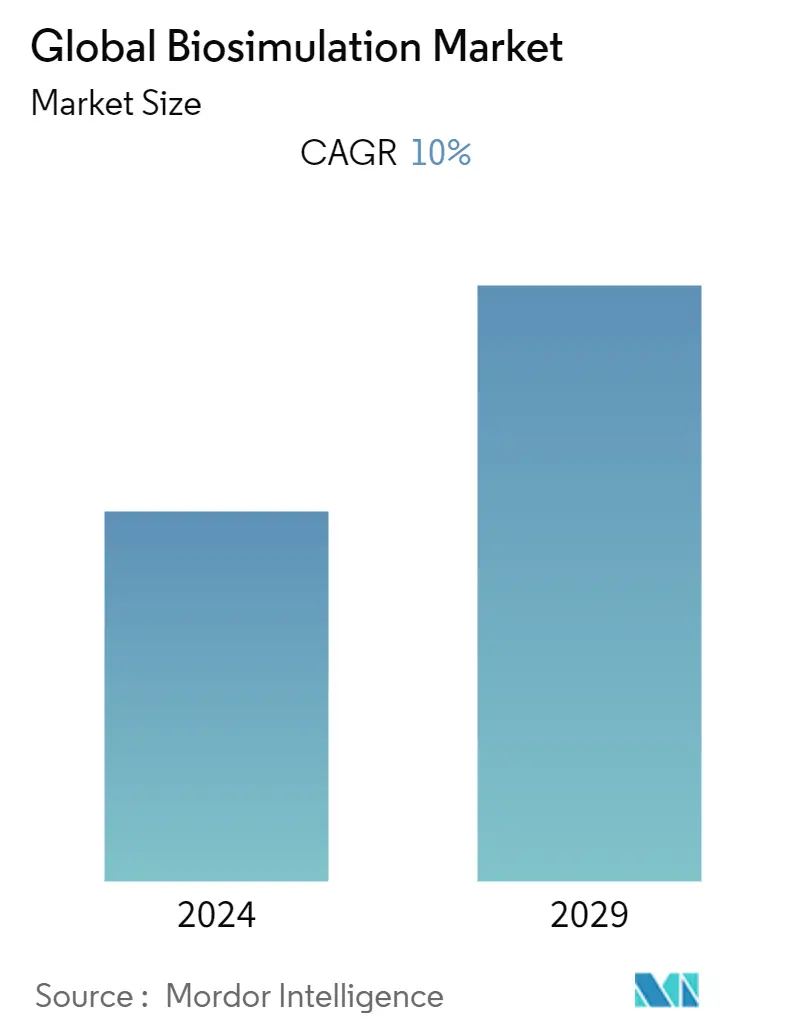
| Study Period | 2019 - 2029 |
| Base Year For Estimation | 2023 |
| CAGR | 10.00 % |
| Fastest Growing Market | Asia Pacific |
| Largest Market | North America |
| Market Concentration | Medium |
Major Players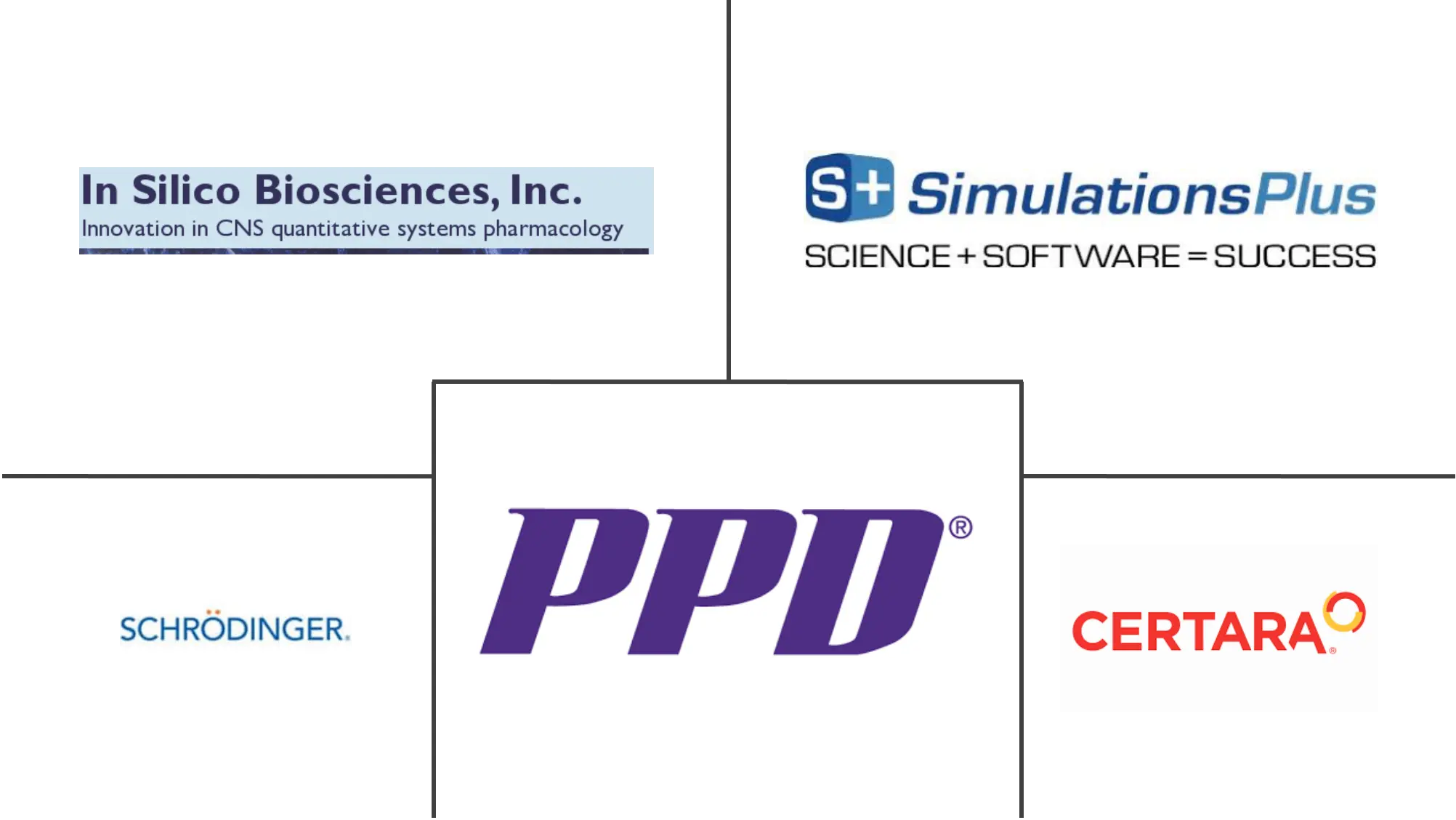
*Disclaimer: Major Players sorted in no particular order |
Need a report that reflects how COVID-19 has impacted this market and its growth?
Biosimulation Market Analysis
Biosimulation Market is poised to grow at a CAGR of 10% during the forecast period (2022-2027). The development of a new drug involves a considerable amount of research and resources. In the process of drug development, from clinical trials to approval, every stage has a very high chance of failure. These changes can be significantly reduced by biosimulation.
During the COVID-19 pandemic, the biosimulation market has witnessed significant growth owing to the significance of this technology in the study of drug development and how it works with the human body. Hence, during the vaccine development for COVID-19, biosimulation helped significantly. For instance, when COVID-19 was declared as a pandemic, Certara, a company that provides biosimulation technology started providing its services to the companies developing a vaccine. Hence, the utilization of biosimulation was higher during the pandemic which fueled the market growth.
Biosimulation not only helps in predicting the chances of failure of a drug in the development process but also reduces the cost of any other possible failures by shrinking the set of clinical experiments. Pharmaceutical giants (such as Pfizer, Merck, Novartis, etc.) and research firms (such as Johnson Pharmaceutical Research & Development) have been employing services offered by biosimulation software and service-providing companies to reduce the trial duration and the high cost involved with failures. High drug discovery and development cost is expected to drive this market with a high growth rate for years to come.
New technologies that are being implemented by key companies are also accelerating the market for biosimulation. For instance, Certara brought a novel technology in the year 2022 that can be beneficial to understanding the challenges in drug discovery and development with complex biologics. In addition, biosimulation is largely being used in healthcare research and development which is propelling the market growth.
Biosimulation Market Trends
This section covers the major market trends shaping the Biosimulation Market according to our research experts:
Software Segment is Expected to Show Significant Growth Over the Forecast Period
Based on the product, the market is segmented into software and services. The high growth in the software segment is attributed to the growing adoption of biosimulation software by pharmaceutical and research organizations and the increasing research and development investment in pharmaceutical research.
Phoenix, which is the industry's premier modeling and simulation software developed by Certara, is used by over 6,000 scientists in 60 countries at nearly 2,000 institutions, including the top 50 global pharmaceutical companies, academic institutes, and research foundations. The software majorly helps in understanding how the body reacts to a drug.
Entelos is one of the simulation software providers that work in the provision of predictive biosimulation for drug discovery and development. The company also provides advanced predictive technologies that lower the risk, time, and cost of product development in the healthcare industry. The presence of such companies in the biosimulation software segment is accelerating the demand for various software and ultimately contributing to the growth of the market studied.
Hence, the rising demand for advanced technologies to reduce the cost incurred on drug discovery and development is expected to drive the market.
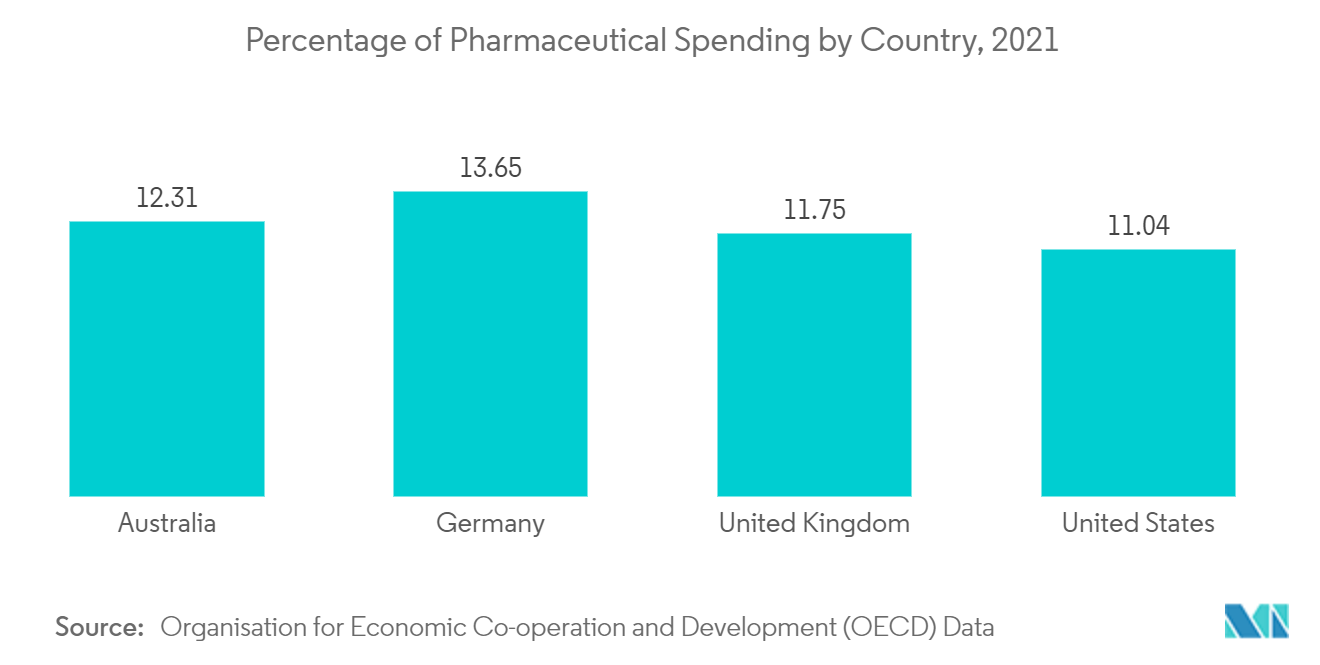
North America Holds the Largest Share in the Biosimulation Market
The biosimulation market holds the largest share in the North American region. In the North American region, the United States holds the largest share owing to the well-established healthcare industry, high utilization of novel technologies in research and development of pharmaceuticals, and the presence of key companies in the country.
As per the data from clinicaltrials.gov, as of 8th August 2022, there are around 134,116 clinical trials going on in the United States which contributes to 32% of the total clinical trials globally. The COVID-19 pandemic has resulted in the huge demand for clinical trials across the United States which is ultimately contributing to the growth of the biosimulation market in the country. Additionally, in May 2022, Simulations Plus, Inc., a leading provider of modeling and simulation software and services for pharmaceutical safety and efficacy, received a renewal of its license from the United States Food and Drug Administration (FDA) for the DILIsym software platform. Such new launches in the biosimulation sector are expected to propel market growth.
The United States has a considerable number of patients in every disease category, which is the prime reason for pharmaceutical companies to conduct clinical trials for new drugs in this region. Furthermore, companies involved in the business of delivering biosimulation software and services are expanding their scope in drug discovery and drug development by utilizing advanced tools and better software optimization. Hence, considering all these factors, the biosimulation market is expected to grow in the forecast period.
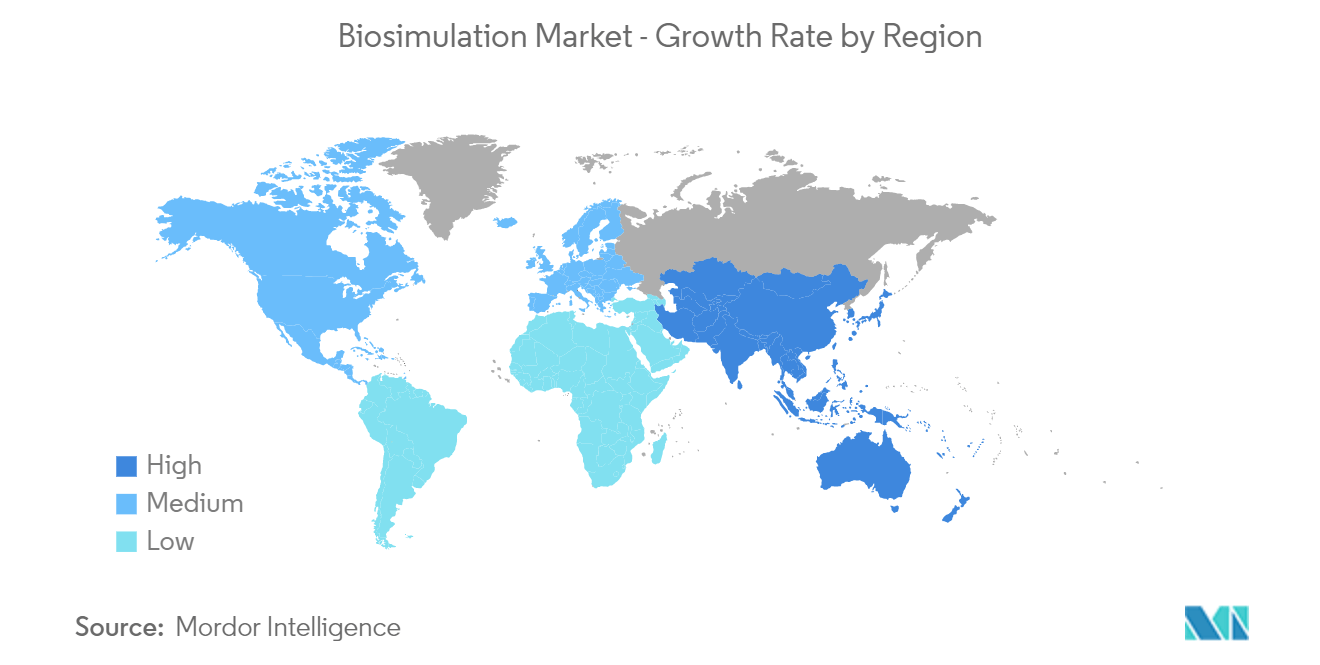
Biosimulation Industry Overview
The biosimulation market is moderately concentrated with the presence of few global companies and multiple local companies in respective countries. Some of the global players in the biosimulation market are Biovia, Certara, L.P, Compugen Inc., Genedata, In Silico Biosciences, Inc., Leadscope Inc, Pharmaceutical Product Development, LLC, Schrödinger, LLC, and Simulations Plus, Inc.
Biosimulation Market Leaders
Certara, L.P.
In Silico Biosciences, Inc.
Pharmaceutical Product Development, LLC
Schrödinger, LLC
Simulations Plus, Inc.
*Disclaimer: Major Players sorted in no particular order
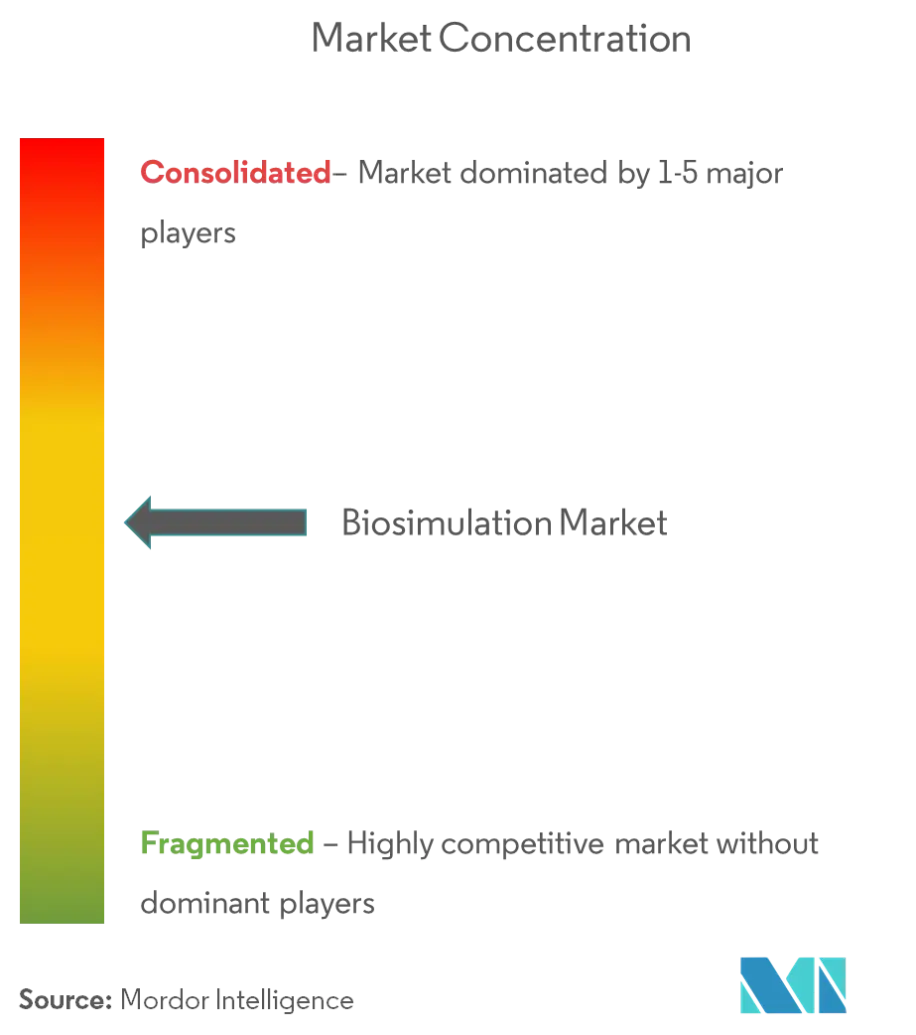
Biosimulation Market News
- In June 2022, Certara announced a launch of a new version of its Immunogenicity (IG), Immuno-Oncology (IO), and Vaccine Simulators to help predict how drugs work and address key questions in the development of novel biologic therapies.
- In April 2021, Applied BioMath launched its first software solution named Applied BioMath Assess which helps project leaders and protein engineers in the assessment of difficulties that come across during the development of biotherapeutics.
Biosimulation Market Report - Table of Contents
1. INTRODUCTION
1.1 Study Assumptions and Market Definition
1.2 Scope of the Study
2. RESEARCH METHODOLOGY
3. EXECUTIVE SUMMARY
4. MARKET DYNAMICS
4.1 Market Overview
4.2 Market Drivers
4.2.1 Increasing Healthcare Expenditure
4.2.2 Growing Adoption of Biosimulation Software
4.2.3 High Drug Discovery and Development Costs
4.3 Market Restraints
4.3.1 Lack of Awareness Among Healthcare Professionals
4.3.2 Lack of Skilled Personnel
4.4 Porter's Five Forces Analysis
4.4.1 Threat of New Entrants
4.4.2 Bargaining Power of Buyers/Consumers
4.4.3 Bargaining Power of Suppliers
4.4.4 Threat of Substitute Products
4.4.5 Intensity of Competitive Rivalry
5. MARKET SEGMENTATION
5.1 By Product
5.1.1 Software
5.1.2 Services
5.2 By Application
5.2.1 Preclinical and Clinical Drug Development
5.2.2 Drug Discovery
5.2.3 Others
5.3 By End User
5.3.1 Pharmaceutical and Biotechnology Companies
5.3.2 Contract Research Organizations
5.3.3 Others
5.4 Geography
5.4.1 North America
5.4.1.1 United States
5.4.1.2 Canada
5.4.1.3 Mexico
5.4.2 Europe
5.4.2.1 Germany
5.4.2.2 United Kingdom
5.4.2.3 France
5.4.2.4 Italy
5.4.2.5 Spain
5.4.2.6 Rest of Europe
5.4.3 Asia-Pacific
5.4.3.1 China
5.4.3.2 Japan
5.4.3.3 India
5.4.3.4 Australia
5.4.3.5 South Korea
5.4.3.6 Rest of Asia-Pacific
5.4.4 Middle-East and Africa
5.4.4.1 GCC
5.4.4.2 South Africa
5.4.4.3 Rest of Middle-East and Africa
5.4.5 South America
5.4.5.1 Brazil
5.4.5.2 Argentina
5.4.5.3 Rest of South America
6. COMPETITIVE LANDSCAPE
6.1 Company Profiles
6.1.1 Biovia
6.1.2 Certara, L.P.
6.1.3 Compugen Inc.
6.1.4 Genedata
6.1.5 In Silico Biosciences, Inc.
6.1.6 Leadscope Inc
6.1.7 Pharmaceutical Product Development, LLC
6.1.8 Schrodinger, LLC
6.1.9 Simulations Plus, Inc.
6.1.10 Entelos Inc
- *List Not Exhaustive
7. MARKET OPPORTUNITIES AND FUTURE TRENDS
Biosimulation Industry Segmentation
As per the scope of the report, Biosimulation refers to the modeling and simulation of complex biological processes and systems to understand their functions and physiologies at the molecular level. The Biosimulation Market is segmented By Product (Software, Service), Application (Preclinical and Clinical Development, Drug Discovery, and Others), End-User (Pharmaceutical and Biotechnology Companies, Contract Research Organizations, Others), and Geography (North America, Europe, Asia Pacific, Middle East, and Africa, South America). The report offers the value (in USD million) for the above segments. The market report also covers the estimated market sizes and trends for 17 different countries across major regions, globally.
| By Product | |
| Software | |
| Services |
| By Application | |
| Preclinical and Clinical Drug Development | |
| Drug Discovery | |
| Others |
| By End User | |
| Pharmaceutical and Biotechnology Companies | |
| Contract Research Organizations | |
| Others |
| Geography | ||||||||
| ||||||||
| ||||||||
| ||||||||
| ||||||||
|
Biosimulation Market Research FAQs
What is the current Global Biosimulation Market size?
The Global Biosimulation Market is projected to register a CAGR of 10% during the forecast period (2024-2029)
Who are the key players in Global Biosimulation Market?
Certara, L.P., In Silico Biosciences, Inc., Pharmaceutical Product Development, LLC, Schrödinger, LLC and Simulations Plus, Inc. are the major companies operating in the Global Biosimulation Market.
Which is the fastest growing region in Global Biosimulation Market?
Asia Pacific is estimated to grow at the highest CAGR over the forecast period (2024-2029).
Which region has the biggest share in Global Biosimulation Market?
In 2024, the North America accounts for the largest market share in Global Biosimulation Market.
What years does this Global Biosimulation Market cover?
The report covers the Global Biosimulation Market historical market size for years: 2019, 2020, 2021, 2022 and 2023. The report also forecasts the Global Biosimulation Market size for years: 2024, 2025, 2026, 2027, 2028 and 2029.
Biosimulation Industry Report
Statistics for the 2024 Biosimulation market share, size and revenue growth rate, created by Mordor Intelligence™ Industry Reports. Biosimulation analysis includes a market forecast outlook to 2029 and historical overview. Get a sample of this industry analysis as a free report PDF download.
